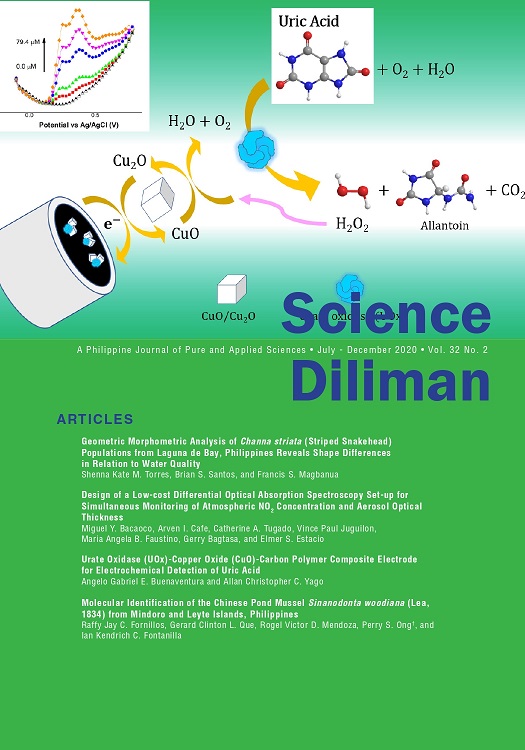Geometric Morphometric Analysis of <em>Channa striata</em> (Striped Snakehead) Populations from Laguna de Bay, Philippines Reveals Shape Differences in Relation to Water Quality
Abstract
Channa striata, locally known as dalag, constitute a major aquaculture resource in Laguna de Bay. Owing to its popularity as a food source, threats such as overfishing may potentially place this species at risk. However, studies regarding its status within the lake is lacking. One way to address this gap is through population studies using geometric morphometrics. In this study, a total of 82 specimens were collected across three areas of the lake, namely, Binangonan, Calamba, and Tanay. These areas were assessed using secondary data for physicochemical parameters, which revealed significantly higher ammonium-nitrogen levels in Binangonan compared to the other areas. Geometric morphometrics was then used to determine whether shape variation existed among C. striata populations. Results showed that shape variation was greatest in the cranial region, with fish from Binangonan and Tanay having the greatest variation in shape. On the other hand, specimens from Calamba had the highest morphometric values. Lastly, these findings were then correlated with water quality data using Canonical Correlation Analysis. Results indicated that shape variation in the cranial region was correlated with differences in dissolved oxygen and pH content of the lake. The weight and length of fish were inversely correlated to the levels of ammonium-nitrogen and total dissolved solids, with specimens from Binangonan displaying a high sensitivity to ammonium-nitrogen.



